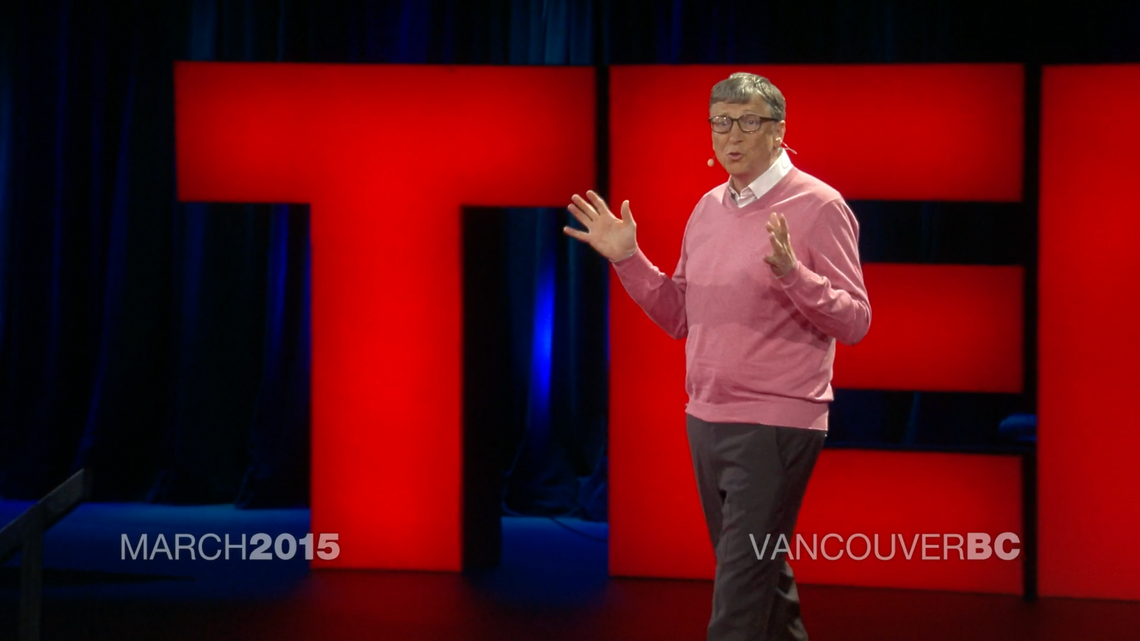How TED Talks became 18 minutes long

Talk briefly, and carry big slides.
The applause fades, the hush falls, and a moment later you’re engrossed in a topic you might only just be learning about. Iconic enough you could recognize them by sound alone, ubiquitous enough you’ve likely watched dozens already.
Yet it all started as “the dinner party I always wanted to have but couldn’t,” with the 300 or so folks Richard Saul Wurman gathered in Monterey, California for an inaugural conference around _T_ech, _E_ntertainment, and _D_esign.
Thus began TED.
“I'm bored out of my head at conferences,” said the founder behind perhaps the most famous conference. “I hate being spoken to. I hate education.”
So perhaps it’s not surprising his brainchild would become known for pithy speeches, that we’d learn how schools kill creativity and that we’re not ready for the next outbreak and more in 18-minute slots at this re-invented conference.
But it took time to get there.
For the next 90 minutes…
You know the feeling: The clock’s ticking, you’ve got to finish your project or submit your homework or file your taxes by midnight. And somehow, you pull it together in the nick of time and hit Submit without a minute to spare.
Now imagine being asked to speak at a conference, and the host is standing on stage hinting you should wrap things up.
That’s how TED talks and their famous 18-minute limit began.
“Presentations ran as long as 90 minutes,” reported Wired magazine about the first TED conference, scarcely different than the standard conference Wurman disliked.
“One path to true innovation is through subtraction,” Wurman would later remark when thinking back about TED. So, with the goal of wondering “What can I create that isn’t boring,” he shook up the presentations.
Wurman would sit on the platform during the talks. He’d stand up, perhaps when boredom kicked in, start walking toward the presenter, standing “closer and closer to them as their time runs out.” Before long, he’d have six people presenting within the 90 minutes an original speech took.
And so, a general 15 minute-limit on talks was standard by the time he sold the TED conference to Chris Anderson in 2001, prompted by little more than when Wurman felt the talks had covered enough and started to lose interest. But it wasn’t set in stone. “I kind of learned in my first year that 15 was often interpreted as 20 or 25,” remarked Anderson to Charlie Rose years later. “And so the 18 initially came in just as an attempt to be more precise.”
And that’s how TED talks managed to recreate what Anderson called “the ancient campfire experience” with information-dense, focused speeches.
There was no technical reason why 18 minutes was chosen, why 15 or 20-minute speeches couldn’t have been better. Perhaps some other time was optimal. But the original guideline stuck, and what started as Wurman crowding speakers off stage turned into today’s most popular talk limit.
That’s what they said.
And TED’s not alone. If anything, it brought conference speeches closer to the length of more public performances.
Lincoln’s Gettysburg Address was a mere 3 minutes long. Kennedy set a nation’s eye on the moon in 17 minutes. Steve Jobs’ Stanford commencement speech was 3 minutes shorter than a TED talk.
Media found similar limits work well. The BBC thinks 3 minutes is enough to tell eight news stories; The News Manual says 15 minutes is enough time to tell 20 stories “and still treat each story properly.” Perhaps that’s too many stories, and you’d prefer more depth—Late-night comedy agrees while still sticking to 12-20 minute limits for its monologues.
18 minutes, as it turned out for TED talks, was “long enough to be serious and short enough to hold people’s attention,” remarked Chris Anderson after Wurman passed the TED torch. “One of the most common (presentation) killers is a lack of clarity,” a particular problem when you’re trying to build something not boring. The time limit saved the day. You can’t edit a live speech; the time limit forces you to self-edit as the next best thing.
“It has a clarifying effect,” said Anderson. “It brings discipline.”
And it turned into a set of guidelines the TED team would tell potential speakers, to keep talks focused on a single major idea—an idea that’s worth sharing.
The limit wasn’t merely helpful for speakers. It also kept listeners’ attention. For most topics, “People will begin to tune out after approximately 10 minutes," found biologist John Medina in research for his book Brain Rules. Even listeners who continue paying attention can only remember so much, anyhow: A 1995 study by the US Navy found “A 20-minute lecture was equal to the classic 50-minute lecture in terms of information retained.
There’s no perfect speech limit. TED’s 18-minute speech limit isn’t magical. But it does seem that it was a close approximation to the best time limit, that something between 10 and 20 minute-long speeches seems best.
Wurman’s original intuition was correct. The hour-long talks were indeed one of traditional conferences’ downfalls, and cutting it down to under 20 minutes did the trick. It kept speakers focused on one topic, kept listeners listening, and turned talks into something sharable, something you could watch on a break, something perfect to go viral.
And that’s how TED talks became 18 minutes long.
Originally published on the now-defunct Racket blog on June 15, 2021.
Thoughts? @reply me on Twitter.
